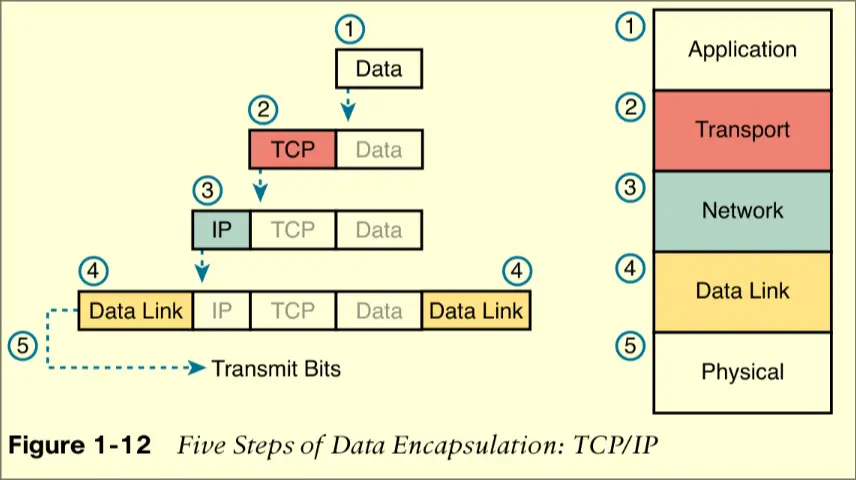The process of structuring several types of data into one packet/module.
Networking
Transmission protocol used for creating Network Messages Encapsulation is the process of putting headers and trailers around payloads
Encapsulation occurs in all layers, but the general term Encapsulation is really only used in the Network Layer and then Data Layer to distinguish between the different methods of Encapsulation those layers have.
For more information, consult each respective page:
General Encapsulation from Application→Physical
For example, sending an HTTP request and getting an HTTP response will send data back with an:
- HTTP header with response code “OK”
- TCP header for current SEQ number
- IP header for the first packet.
- Data layer encapsulation in preparation for physical Bit Transmission
 One step corresponds to the role of each layer.
One step corresponds to the role of each layer.
5 Step Process
The process can be divided into 5 steps.
 We use our 5 Layer model for this one.
We use our 5 Layer model for this one.
- Create and encapsulate application data with application headers. For HTTP, that is the HTTP header “OK(200)”
- Encapsulate data inside a TCP header. Used to count the current packet sequence number
- Encapsulate data inside IP header. To tell them what this address is
- Encapsulate data inside Data header and trailer. Different depending on whether you are using the Point-to-Point Protocol or High-Level Data Link Control Protocol. An example encapsulation for PPP looks like this:

- Transmit the bits. Physical layer encodes the data as a signal. Data undergoes Bit Transmission